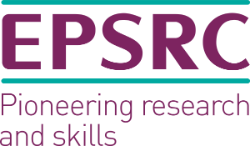CMR Projects
Recent projects
EPSRC project LIVEBIO: Light-weight Verification for Synthetic Biology
Along with the advances in the wet lab and computational methods, the functionality and complexity of synthetic biology (SB) systems are steadily growing, which brings in a major issue: the likelihood that faults and flaws existent in these systems.
This can result in the construction of bio-parts and components that are faulty by design. At the moment, there are no established methods in SB to find errors and verify correctness. The current practice is limited to understanding the sub-cellular molecular machinery in wet-lab environments, which is costly and extremely slow.
The existing computational approaches for analysing biological processes mainly rely on simulation; but many important system properties cannot be inferred using this method. Also, simulation tells the "existence of errors, not their absence". So, it is not an efficient method to guarantee the system correctness.
LIVEBIO aims to pave the way for the next generation verification of large and complex synthetic bio-systems. The novel approach proposed in this project will permit rapid verification of complex SB systems and provide increased assurance and trust when building new synthetic biology systems. The project will deliver an authentic and systematic certification guideline, which will allow biologists to certify their genetic parts & components and reuse them in different systems.
Find out more about the LIVEBIO project.
Innovate UK KTP: Smart Network Traffic Monitoring
In partnership with Xalient Ltd, the project will deliver a state-of-the-art intelligent IT service management suite integrating various services including cloud-based network monitoring systems, device orchestration toolsets, AI analytics, Cyber Security platform and IT service management platforms.
The development of an intelligent service management suite will automate business processes that are normally done by network engineers. This will allow enable dealing with problems in a much more efficient, fast and reliable way.
The project is highly novel because it will enable Xalient for the first time to predict, understand and launch optimal pre-emptive targeted actions for all global clients simultaneously for all network issues thereby underpinning the company's growth and strategic targets.
Find out more about the Innovate UK KTP funding scheme Innovate UK KTP funding scheme.
Innovate UK KTP: Web Content Classification System
Working with Exa Networks, the project aims to improve the accuracy of the company's SurfProtect classification system beyond the current state of the art.
To meet this goal, a variety of data has been used to provide the best possible accuracy, especially when dealing with sites that actively attempt to avoid classification.
Using various topic modelling methods, this data and the observed relationships between sites enable us to identify the most appropriate groupings of content for accurate classification which can be mapped to existing, broader category definitions.
Innovate UK KTP: Intelligent Big Data Technologies for Food Manufacturing
In partnership with Rakusen's Ltd, the project aims to develop a new intelligent system capable of online decision making by analysing large-scale data at real-time in a highly complex food manufacturing environment.
The project will fully utilise Artificial Intelligence, Data Analytics, Big Data and Industry IoT technologies to offer ‘smart’ solutions for real-time monitoring of the data gathered from the production processes and extracting the information needed for making the right decisions in time to predict certain events in advance. This capability is also used to develop an automated production system to increase productivity and performance and enhance optimum output rates.
This strategic project will address the following: (i) understanding the process, (ii) improving consistency of production across all production lines, (iii) improving efficiency and capacity through flexible manufacturing, (iv) reducing operational costs through reduced labour and utility expenditure, and (v) improving competitiveness of the business.
Access Innovation: Intelligent Network Services
The project will design and build a cloud hosted, web-based system prototype integrating various services such as monitoring systems, device orchestration toolsets, AI components and an IT Service Management platform.
The prototype platform will utilise a number of isolated existing platforms with data visualisation component extracting significant data from the monitored systems and exploiting advanced data analytics techniques.

Access Innovation: AI-based Customer Feedback Analysis
The project will develop a software platform that will allow the company to analyse the customer feedback using data analytics and machine learning methods and map it into `meaningful’ patterns allowing to evaluate customer experience, hence improving the Company’s business practices.
This will bridge the existing web portal with AI/machine learning solutions that refines the customer mapping journey. The platform will allow automatically analysing customer feedback and will use that analysis to indicate which process points the SME needs to change to improve customer satisfaction, sales and retention.

ROADBLOCK: Towards Programmable Defensive Bacterial Coatings & Skins
PI: M. Gheorghe (when with University of Sheffield)
This application-driven research project will seek to integrate the creation of new computational algorithms, tools and theories for synthetic biology (SB) with well-established wet lab techniques to develop an integrated and validated software suite (i.e. an in-silico workbench) for SB.
This project will focus on synthetic biology (SB) routes for creating engineered coatings, based on modified bacteria, that will act as bio-programmable shields against colonisation. The target application in this proposal is healthcare, using SB to develop biological based tools to tackle infection, however it is envisaged that ROADBLOCK constructs could be applicable in other medical, environmental or industrial applications in which bacterial colonisation or biofilm formation should be avoided. It will also consider the major social and ethical issues raised by this technology.
The new computational tools will permit rapid bio-model prototyping and specification, simulation, verification, analysis and optimisation. Moreover, it will create ROADBLOCK biological parts, devices and systems. Previous SB projects had mainly mathematical (e.g. control theory, bifurcation analysis, differential equations, etc) components as auxiliary tools.
Previous Projects
Exploitation of High Performance Computing in the FLAME Agent-Based Simulation Framework
PI: M. Gheorghe (when with University of Sheffield)
The first prototype of the Flexible Large-Scale Agent Modelling Environment (FLAME) has been developed through a collaboration of University of Sheffield and STFC Rutherford Appleton Lab. It is an implementation of communicating X-machines for use in multi-agents simulations. X-agents models can be created to model many types of complex systems and the simulations run on parallel platforms. FLAME is an environment for generating agent-based applications - it is not an agent application in itself. FLAME takes as input from the application development a model definition and a set of agent functions and using the FLAME Template Library, FLAME constructs the agent-based application required.
More about this project here>>

Other projects
These were with M. Gheorghe as PI when with University of Sheffield.
- INTERREG IVC project OSEPA: the usage of open source software in public administration
- Royal Academy of Engineering Research Exchanges with India project: strengthen the collaboration with IIT Chennai
- British Council travel grant with the University of Metz, France: collaboration on unconventional computing models
- EPSRC project OBSERVATORY: the use of classical software engineering methods vs agile approaches
- EPSRC project MOLECULAR X-MACHINES (2002-2005): the interactions between X-machines and P systems.
